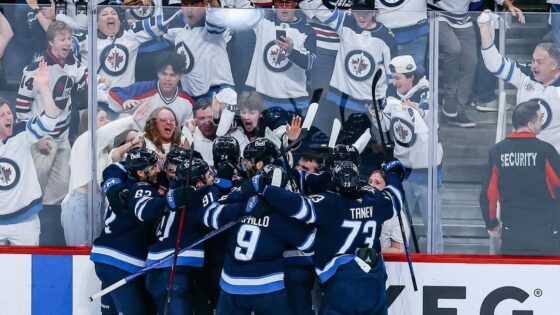The President’s Trophy curse is staved off for now. And it didn’t come easy, did it? Ask any Winnipeg Jets fans. They will talk about what a nerve-wrecking series it was against the St. Louis Blues, needing a last-second goal in regulation time of the final game so that they could stay in the playoffs. Eventually, after what became the 3rd-longest 7th game in NHL history, the Jets made their way into the 2nd round.
Safe to say, this NHL postseason has been bonkers. And we just got done with the 1st round. The competitiveness of the teams is there for you to see. The games are tight and tense, with many going to overtime. And as a fan, you need to stay on top of it all, isn’t it? That means knowing exactly what’s what and what are the subtle rules. Well, do you know the overtime works in a unique way in the playoffs? Let’s get to know about it as we get ready for the next rounds to bombard us with some chills and thrills.
When do you need an overtime in the postseason?
First things first. Overtime has been a part of the NHL for years. Be it a period of 5 minutes, 10 minutes, or 20, they have been in the NHL since 1983 which for the younger generations of fans will be as long as they can remember. In fact, there are no ties in the game. Not since the 2005-06 season, after which the NHL got rid of ties after overtime by introducing the shootout.
If the game ends all square in regulation time, we play an overtime period with sudden-death rules. Meaning the first team to score in overtime wins the game. That’s the rule in the regular season. And that’s how it works in the postseason, too. But there is a difference, a big one. And that makes a postseason overtime totally different, and in fact very important.
How many overtimes are allowed in an NHL postseason game?
Well, in the regular season, you play an overtime period of 5 minutes, after which, if the score is still tied, you go into 3 rounds of the shootout. And in the postseason? There are no provisions for a shootout at all. In fact, you play overtimes, which are 20 minutes in duration (instead of 5 minutes), and you keep playing until a team scores.
Sounds tedious, doesn’t it? And it runs the risk of dragging on for a long time on chance occasions, right? Well, you aren’t wrong. The playoffs have some of the longest and most enduring games in the history of the NHL. You know how long the longest game in the NHL lasted? 176 minutes and 30 seconds. After 60 minutes of regular time, the Detroit Red Wings and Montreal Maroons played 6 periods of overtime. And with 3:30 minutes left on the buzzer, the Red Wings scored the only goal of the game.
In more recent years, the Philadelphia Flyers and Pittsburgh Penguins played 5 periods of overtime to decide a postseason game in 2000. This was, in fact, the 3rd-longest game in modern NHL history, clocking in at 152:01. In 2020, the Tampa Bay Lightning had to play for 90 minutes and 27 seconds to break the deadlock with the Columbus Blue Jackets. Even as recently as 2023, the Florida Panthers and the Carolina Hurricanes played for 79 minutes and 47 seconds in the 2023 Stanley Cup playoffs before the former scored through Matthew Tkachuk.
So, as you can understand, it can get excruciating, it can drain everything out of you until you simply collapse on the ice. But these teams come to fight. Like the saying goes, “All it takes is everything”. And this rule literally tests how far you can go. Remember the longest game we mentioned – the 176 minutes of gametime? As per NHL.com, the Red Wings goaltender Normie Smith lost 12 pounds of body weight during that epic game, while also making 92 saves to help his team get the win.
The Jets-Blues 7th game on May 4, 2025, was 96:10 minutes long. So, we guess you now know what to expect, don’t you? Well, there are still a few differences that separate the regular season OT from a postseason one.
How many players are allowed on the ice during overtimes?
In the regular season overtime period, teams start with 3 players on the ice on each side (excluding the goalies). So there are more spaces and more chances to score. And it is basically a nudge from the NHL towards a quicker outcome. They don’t want games to drag on because there are 82 games each team needs to play. And even if nothing happens in the 5-minute OT, there’s always the shootout.
But in the postseason overtime, teams start with 5 on the ice, 6 if you include the goaltender. Meaning it’s just like an extended regulation period. And even the rules are the same as the regulation period. What does that tell you? That the NHL wants a proper result. No quick result, no forced outcome, no question marks. Take all the time you need, and eventually, a team comes out on top.
This way, the winner gets decided on the basis of every aspect that is relevant in the sports – skill, work ethic, game intelligence, and fitness. So, the next time you are sitting down for a playoff game, hope you are ready to match the stamina of your favorite superstar.
The post How Many Overtimes Are There in NHL Playoffs? Everything You Need to Know About Rules appeared first on EssentiallySports.
